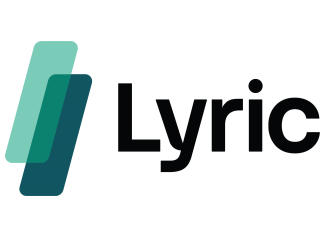

As fertility continues to evolve beyond the clinic, this session brings together leaders from pharma, digital health and wearables to explore new models of partnership shaping the next decade of reproductive care.
Sharing the commercial opportunity of RRM and how each stakeholder in the fertility ecosystem will be impacted.
Understand how partnerships are evolving at the pharmacy and clinic level to improve access to IVF and fertility treatments.
Understanding how fertility PE activity and consolidation will impact the next generation of care.

Stephanie Silverman
Stephanie Silverman spent over a decade investing and advising healthcare companies at Rock Health and Goldman Sachs before launching her own boutique digital health consulting and advisory firm - Solstice. Today, Solstice is proud to serve a select group of venture-backed startups and international tech and healthcare enterprises, offering each bespoke access to Stephanie's deep understanding of the complexities - and shortcuts - navigating the U.S. digital health healthcare ecosystem.
As Founder & CEO of Solstice, Stephanie leverages the tactical expertise honed earlier in her career with her belief in the value of an informed, thoughtful approach to network development. The strength of Solstice's platform is built on the quality of services – helping venture-backed digital health startups position themselves expertly in the marketplace and advising enterprise leaders navigate a crowded landscape with ease. This dual-sided approach enables Solstice to curate a deep network of industry connections, each of whom benefit from the strength of the broader community. Stephanie authors industry analysis and hosts invitational events for this community, helping solidify connections and form new bonds.
Stephanie is the author of the long-form thought piece "The Change" We Need in Midlife Women's Health, a culmination of 4 years of industry research and relationship building with founders, investors and industry thought leaders. The deep dive is a CTA for increased innovation and investment in healthcare for women in midlife, covering everything from the misunderstood financial burden of hot flashes to the startup models best suited to scale.

Nara Lee

Kelly Wirka

Jill Angelo
- Explore how shifting economic trends are influencing venture capital, strategic partnerships, and fundraising opportunities in women’s health.
- Hear how investors are redefining risk and value and what start-ups must demonstrate to stand out and secure funding in today’s tighter investment environment.
- Learn actionable strategies for resilience and growth, from capital efficiency and non-dilutive funding to building investor confidence through strong clinical and commercial milestones.

Anula Jayasuriya

Julia McDowell

Anna Valcheva

Megan Dover

Charlie Jensen
In today’s healthcare landscape, payers and providers face mounting pressure to deliver accurate, efficient, and fair payment outcomes. Yet, longstanding friction between the two sides often undermines collaboration and trust. This session will explore how technology—particularly AI-driven innovations—can act as a bridge, enabling transparency, consistency, and shared confidence in payment integrity.
Lyric’s Chief Product Officer will share strategies for leveraging advanced technology to reduce administrative burden, strengthen data accuracy, and align payers and providers around common goals. Attendees will gain insight into practical applications that build trust while improving operational performance, ensuring that innovation benefits both organizations and the members they serve.

Brian Berkowitz

Akshay Sharma
Akshay Sharma leads AI at Lyric, driving innovations that make payment integrity and accuracy seamless for payers and providers.
An experienced entrepreneur and product leader, he has scaled transformative technologies across healthcare, finance, and artificial intelligence.
He also invests in and incubates ventures that harness technology for meaningful impact.
Lyric
Website: www.lyric.ai
Lyric is an AI-first, platform-based healthcare technology company, committed to simplifying the business of care by preventing inaccurate payments and reducing overall waste in the healthcare ecosystem, enabling more efficient use of resources to reduce the cost of care for payers, providers, and patients. Lyric is a market leader with 35 years of pre-pay editing expertise, dedicated teams, and top technology. Lyric is proud to be recognized as 2025 Best in KLAS for Pre-Payment Accuracy and Integrity, is HI-TRUST and SOC2 certified, and a recipient of the 2025 CandE Award for Candidate Experience. Discover more at Lyric.ai

Vishal Sarin
Vishal is a deep tech entrepreneur and engineer with over 25 years of success in numerous strategic leadership capacities in semiconductors and related systems. His calling is driving and leading company and technology vision, building exceptional business and engineering teams in both startup and large-scale organizations. His seminal work has been in analog in-memory computing using non-volatile memories. Underpinning this are his numerous innovations in associative and in-memory compute architectures; SLC/MLC/TLC/QLC flash; network processors, and artificial intelligence architectures. He has over 100 patents, authored numerous publications, and holds an MSEE from University of Michigan and an MBA from UC Berkeley.
HPRI Benchmarking Sessions

David Tischler
David is a Developer Advocate at Edge Impulse, helping the community learn about the shift from the cloud to the edge, and how running AI/ML workloads on tiny devices is 100% achievable. In his spare time, David loves horsepower, drinks way too much coffee, and is an extreme recycler.

Heath Blandford
Heath is a Senior Solutions Engineer at Edge Impulse, working to help customers bring enterprise grade AI to the Edge to solve real world problems. In his spare time, Heath enjoys training for ultra-endurance races, backpacking, and watching Formula 1.
